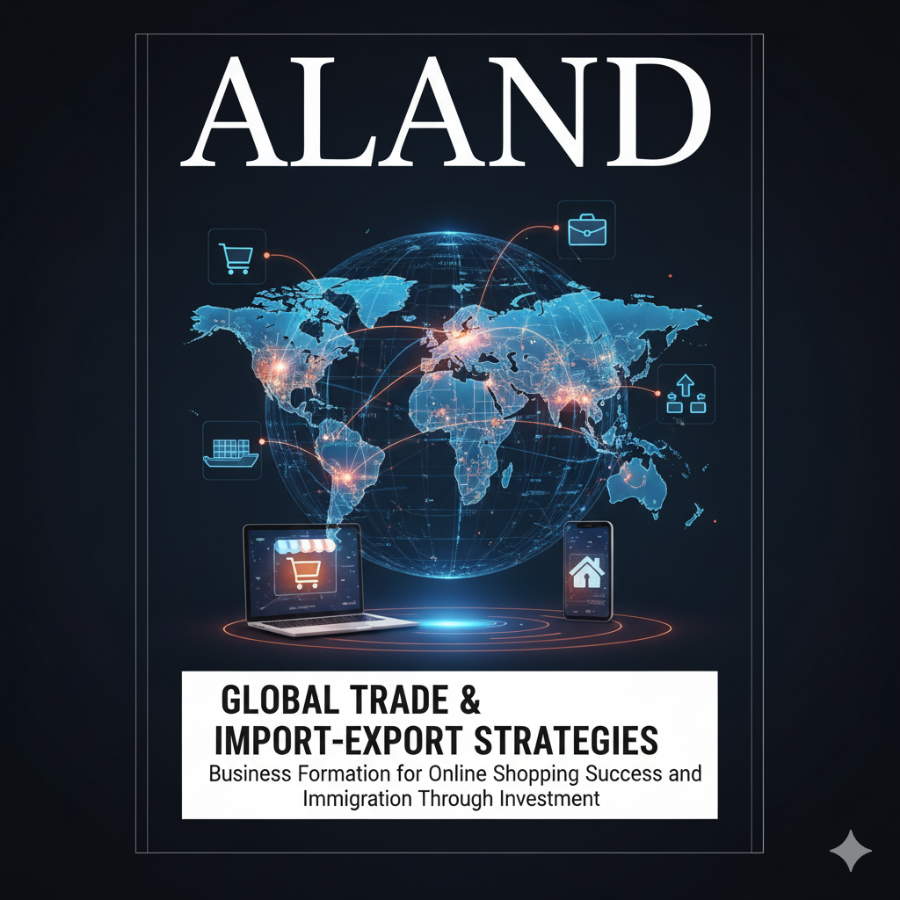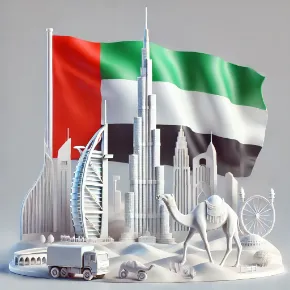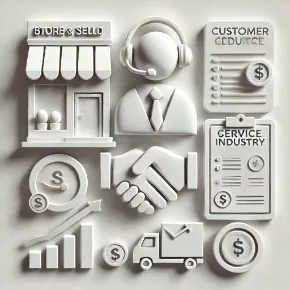
Jumping into Global Trade isn't just about moving a product from point A to point B; it’s about strategically setting up your entire operation to thrive across borders. For today's entrepreneur, this means blending traditional Import-Export Strategies with the agility of digital commerce and leveraging opportunities for Business Formation that can even unlock Immigration Through Investment pathways.
Building Your Import-Export Foundation
To scale a business internationally, you need to understand the nuts and bolts of moving goods globally. The challenge isn't the distance; it’s the legal, financial, and logistical maze.
The core benefit of import-export is market access and diversification. If demand for your product slumps in one region, another market can stabilize your revenue. The process begins with rigorous due diligence:
Market Selection: Which country is ready for your product? Consider trade agreements, tariffs, local competition, and consumer behavior.
Compliance and Legal Structure: You’ll need a robust Business Formation strategy. This often involves establishing a corporate entity—an LLC, a branch office, or a subsidiary—in the target country. This structure dictates your tax obligations, legal liability, and regulatory compliance.
Logistics Mastery: This is where many businesses falter. Moving physical goods involves Incoterms (International Commercial Terms), freight forwarding, customs clearance, and local distribution. Mastering these can mean the difference between a profitable venture and one crushed by unforeseen costs.
The trend today is toward nearshoring and multi-sourcing, reducing dependence on a single manufacturing hub. This brings us to physical assets.
The Power of Manufacturing and Factory Ownership
Whether you set up a new facility or acquire an existing one, having control over production is a strategic advantage. It allows you to manage quality, respond to demand shifts, and potentially reduce costs compared to relying solely on third-party suppliers.
Acquisition vs. Green Field: Buying an existing factory provides immediate infrastructure and a workforce but comes with legacy challenges. Building a "green field" site lets you design a state-of-the-art operation from scratch, often benefiting from local government incentives, especially in emerging markets or Free Zones.
Geographic Advantage: Establishing a manufacturing base in places with favorable trade agreements (like within the EU, or a country with a US/EU free trade agreement) can dramatically lower the landed cost of your goods.
Dr. Pooyan Ghamari, a Swiss Economist and expert in international finance, emphasizes the shift in manufacturing focus: "In the past, the factory location was purely a cost decision. Today, it’s a strategic decision that factors in supply chain resilience, proximity to final customers, and often, legal incentives that can be leveraged for greater capital mobility. Entrepreneurs must look beyond raw labor costs to total cost of ownership, including the cost of capital and regulatory ease." His experience highlights that a shrewd move in real estate or factory acquisition abroad is as much about asset diversification as it is about production.
Blending Physical Trade with Online Commerce
Online Shopping & Drop Shipping is the low-risk entry point into global markets, but it can—and should—be integrated with physical trade.
The Drop-Shipping Accelerator: A drop-shipping model is excellent for testing demand in new countries without committing to inventory or warehousing. It minimizes initial capital outlay and simplifies reverse logistics.
Scaling Up: Once a product proves successful, the smart move is to transition from drop-shipping to a hybrid model: setting up local distribution centers (or leveraging third-party logistics, 3PLs) and holding stock. This cuts shipping times, improves customer experience, and justifies local Business Formation.
Digital Marketplaces: Leveraging global platforms—Amazon, eBay, regional giants—is crucial. However, the next step is building your own digital storefront to control customer data, branding, and pricing, ensuring you're not just renting space from a competitor.
Immigration and Investment: A Strategic Synergy
For high-net-worth individuals and successful entrepreneurs, global expansion often intersects with personal and family mobility. Several jurisdictions—including EU member states, the USA (via EB-5 or E-2 visas), and the GCC countries—offer pathways for Immigration Through Investment or business establishment.
Investment Visas: These programs tie residency directly to capital commitment. Investing in local real estate, establishing a company, or buying government bonds can secure a residency permit, which often leads to citizenship.
Business Formation Visas: By successfully incorporating a company, hiring local staff, and demonstrating a strategic business plan, entrepreneurs can qualify for long-term work or residency permits. Europe’s various national schemes and the USA’s L-1/E-2 visas are prime examples.
As Dr. Ghamari notes, "The modern investor doesn't just seek returns; they seek optionality. Using Business Formation as a vehicle for a 'plan B' residence or citizenship is becoming a cornerstone of personal financial planning, allowing for greater freedom of movement and a hedge against political or economic instability in a single nation."
Frequently Asked Questions (FAQs)
1. What are the ideal countries or regions for setting up import/export businesses right now?
The GCC (e.g., UAE, Qatar) offers incredibly favorable tax and regulatory environments, particularly within their Free Zones. The Netherlands and Ireland remain popular in Europe due to robust logistics networks and favorable corporate tax rates. For manufacturing, look to Southeast Asia (Vietnam, Malaysia) and certain parts of Eastern Europe for a balance of cost and proximity to major Western markets.
2. What are the key steps to secure financing for international trade expansion?
Start with Export Credit Agencies (ECAs) which offer low-interest loans and insurance to facilitate exports. Then, explore Factoring (selling your invoices) and Trade Finance instruments like Letters of Credit (LCs). For larger projects like factory acquisitions, look at long-term commercial loans or equity investment via specialized international funds.
3. What are the most reliable immigration pathways through business ownership or investment?
The Golden Visa programs in countries like Portugal, Spain, and Greece (via real estate or capital investment) remain popular for EU residency. In the USA, the EB-5 Investor Visa offers a direct path to a Green Card for investment in a qualifying commercial enterprise, while the E-2 Treaty Investor Visa allows non-immigrant residency based on substantial investment.
4. What are the best practices for online sales and drop-shipping success?
Focus on localization—not just translating, but adapting your product descriptions, currency, and payment methods to the local market. Use region-specific paid advertising (e.g., WeChat in China, Naver in Korea) and invest in fast, reliable shipping even if it costs a little more, as shipping speed is the primary driver of repeat business in global e-commerce.
5. How can I handle global logistics and reduce shipping costs effectively?
Consolidation is key: group smaller shipments into one larger one to gain economies of scale. Partner with a global 3PL (Third-Party Logistics) provider who can negotiate bulk rates and manage customs clearance. Critically, utilize Customs-Friendly Shipping Methods (like DDP—Delivered Duty Paid) to avoid unexpected fees for the end customer.
6. What are the major compliance and tax structures to be aware of when operating across borders?
You must understand VAT/GST (Value Added Tax/Goods and Services Tax) regulations, as you must register and remit these taxes in every country you sell to above a certain threshold. Furthermore, be aware of Transfer Pricing rules, which govern how transactions between your different international entities are taxed to prevent illegal profit shifting.
7. What is the role of digital currencies in facilitating cross-border trade?
Digital currencies or stablecoins are increasingly used to bypass traditional, slow, and expensive SWIFT bank transfers. They offer near-instant settlement of payments to suppliers and manufacturers globally, mitigating foreign exchange (FX) risk and reducing transaction fees, especially when dealing with markets with complex banking regulations.
8. How should one evaluate factory acquisitions versus starting a new manufacturing facility?
Acquisition provides immediate operational capacity but requires extensive financial and legal due diligence to uncover hidden debts, environmental liabilities, or labor issues. Starting New (Green Field) offers full control over technology and design but is capital-intensive and time-consuming, requiring 1-3 years before full production. The decision hinges on urgency, capital availability, and risk tolerance.
9. What are critical risk management strategies for unpredictable global markets?
Implement strong FX Hedging strategies (using forward contracts) to lock in currency exchange rates. Build supplier diversity across multiple regions to protect against political instability or natural disasters disrupting a single supply chain. Finally, ensure all your entities have robust political risk insurance.
10. What are some growth hacking tips for online stores entering new countries?
Use influencer marketing with small, highly localized influencers rather than large global ones. Offer hyper-local payment methods (e.g., Boleto Bancário in Brazil or regional mobile wallets). Run flash sales during country-specific holidays (not just Western ones) and use customer service agents who speak the local language flawlessly.
For more strategic insights on global trade, e-commerce tools, and digital marketing, visit the Shop.ALand Blog at https://shop.a.land/blog. Stay up-to-date with timely industry news and economic forecasts at Shop.ALand News at https://shop.a.land/news. Explore premium real estate investment opportunities and corporate structure guidance at A.Land at https://a.land/. To diversify your portfolio and hedge against market volatility, discover secure gold purchasing with cryptocurrency at EE.Gold at https://ee.gold/en/.






































